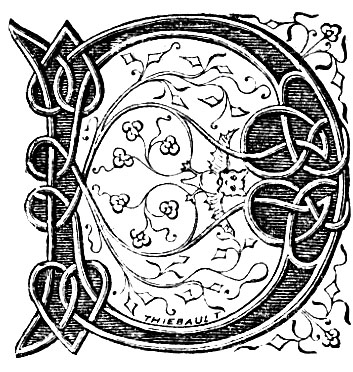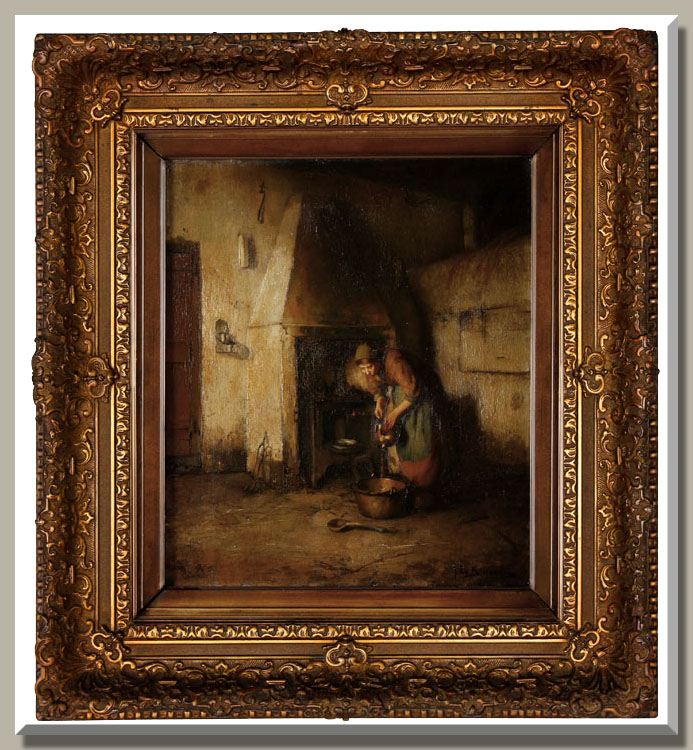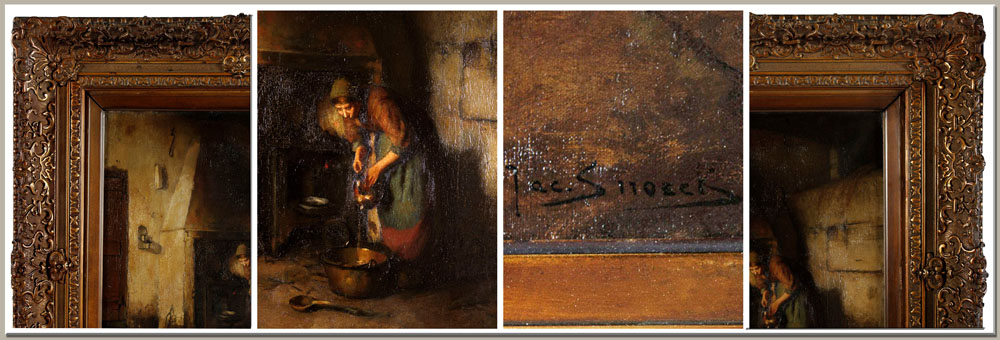 utch antique paintings are among the most admired paintings in the world. During the 19th century, the fine arts enjoyed a vigorous revival in Netherlands, inspired by great 17th century Dutch artists. The Hague Academy of Drawing was largely responsible for the resurgence of this realism movement; which also was influenced by the French Barbizon School. This school produced the greatest array of masters not seen since the era of Rembrandt and Vermeer in the Netherlands.
utch antique paintings are among the most admired paintings in the world. During the 19th century, the fine arts enjoyed a vigorous revival in Netherlands, inspired by great 17th century Dutch artists. The Hague Academy of Drawing was largely responsible for the resurgence of this realism movement; which also was influenced by the French Barbizon School. This school produced the greatest array of masters not seen since the era of Rembrandt and Vermeer in the Netherlands.
During the 19th century The Hague evolved into a vast center of art where painters converged, inspired by this revival of the realism movement. Characteristics of this movement included the depiction of humble everyday subjects, depicting sentimental and romantic treatment of works.
The painting below by Jacque Snoeck belongs to this naturalistic period and his fond portrayal of the rural ideal is clearly obvious.
Although Jacques Cornelius Snoeck lived only between 1881 and 1921 he is considered one of the last great Dutch interior scene painters. He was born in Laren, Holland and acquired his art training at the Royal Academy of Art (The Hague) between 1900 and 1904 under the tutelage of Carl Ferdinand Sierich. His works have inspired such famous Dutch painters as Simon Duiker ~ whose paintings are part of the Dutch National Collection. Jacques Snoeck paintings have been featured at Christie’s actions with amazing results and are so popular that they are being replicated to this day. The subject of his work often depicted middle class Dutch life, particularly women at work in the home ~ cooking, sewing and rearing children.
This particular painting depicts a peasant women preparing food in a farmhouse kitchen, but the true subject of this work, a theme repeated in many of his works, is the Dutch home ~ it’s warm spaces and the woman in charge of keeping it homelike and inviting with the combination of motherly love and a comforting meal. This microcosm of Dutch life during the late 19th century was a popular subject in the Romantic Movement glorifying folk and rustic style. The artist used warm tones of burnt ochre and muted gold to achieve amazing textures on this canvas. He applied special attention to the care she takes in her task of preparing the daily meal. This exquisite oil on canvas survives in superlative condition with its original elaborately gilded frame. Circa 1910-1915.









This is so beautiful! I love love love the colors not to mention the frame. I love art and only have few special pieces but am always on the prowl to find great art. So great to discover your wonderful blog!